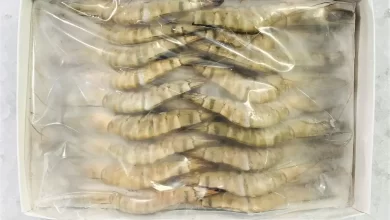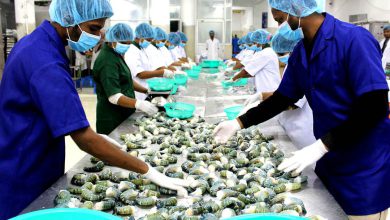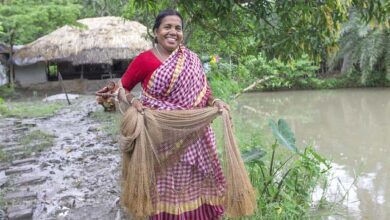Freshwater fish Pabda, farmed in saline water area with success
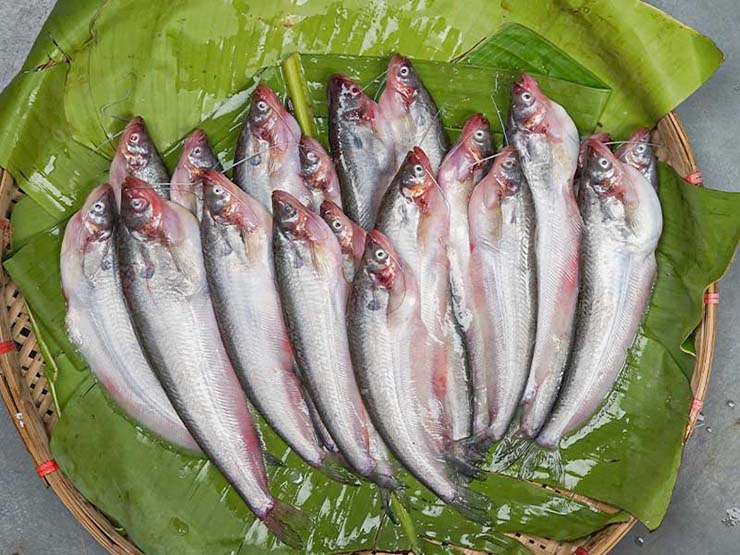
The Pabda fish (Ompok bimaculatus) also known as “Butter Catfish” is a freshwater species. However, Alauddin Jawaddar of Dumuria upazila from Khulna, cultivates Pabda in the saline water area. He sells Pabda fish worth Tk 5 – 6 million (USD 50 – 60K) annually. Furthermore, Pabda fish from his farm are exported to India as well.
The story of Alauddin Jawaddar was different earlier. He wasn’t a freshwater fish farmer, rather a shrimp farmer to begin with. Unfortunately, he was unable to make a profit from shrimp farming for many years. This continuous loss made him think differently and felt an urge to cultivate other than shrimp. He said, “Good quality shrimp fry is lacking in this area. Moreover, the quality of the shrimp fry obtained from hatcheries is very poor too. Additionally, it was difficult to collect fry from natural sources. As the fry needs to be collected from the river, which is a challenging task.”
“Our family possesses some arable land. Hence, I had no choice but to join any profession other than agriculture. So along with agriculture, we started farming shrimp. But, shrimp farming was not very profitable.” He added.
‘Once some people from Mymensingh came to visit our area. They inspired me to farm other fish. They said that it is possible to make profit by cultivating local species of fish found in the Mymensingh area. I went to Mymensingh as they said. From there I bought 100k Pabda fish fry. I spent almost Tk 120K,” Alauddin said.
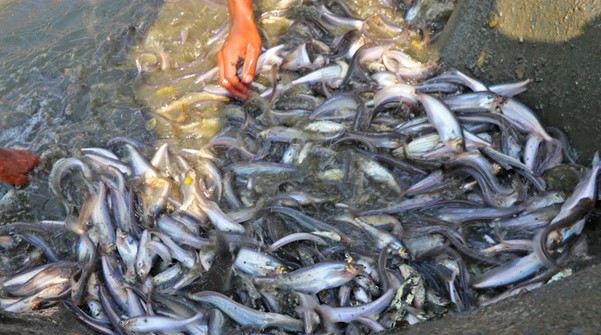
“However, I face loss due to the lack of knowledge. If you do not provide the same-size fish fry in ponds, the larger fish will prey upon the smaller ones. This is the greatest challenge in Pabda farming. I have faced the same situation, as I put different sizes of Pabda in the same pond, the bigger ones eat the smaller ones. There were approximately 5,000 fish alive at that time, which we sold for Tk 650 per kilogram. Altogether there was a loss of Tk 300-400K that year,” he added.
However, Alauddin Jawaddar did not give up despite his failure. He again bought another 100,000 Pabda fry despite family disapproval and cultivated them. This time, around 85% of the Pabda fry survived. He sold at 650 Tk per kilogram and earned a profit of almost Tk 300K after recouping his losses from the prior year.
Alauddin Jawaddar did not look back ever since. He started cultivating Pabda on a larger scale. He said: “In 2018, I was introduced to the local fisheries officer. With his advice, I started farming Pabda in a more scientific way. Moreover, I had leased 10 bigha of land for 5 years in a contract of Tk 500,000 per year. That year I bought 500,000 Pabda fries from Bogra and started cultivation.”
“I spent a total of Tk 2.7 million to cultivate Pabda in 2021. Although, in a single day, I sold fish worth Tk 1.7 million. I earned roughly Tk 5 million in total. Two local fish traders purchase Pabda from me and sell it to India via LC. Last year (2021), 9000 kg of fish from my farm were shipped to Kolkata. This year (2022), 3200 kg of fish have already been exported. In a few days, it is expected that another 6000 kg of fish will be exported,” he added.
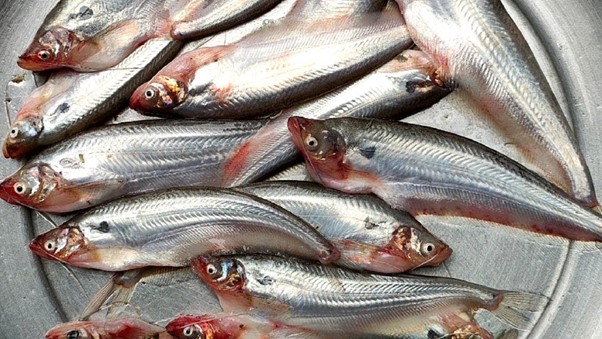
The Southwest region of Bangladesh offers enormous potential for Pabda farming. A farmer can cultivate Pabda three times a year meaning 3 harvest per year. However, the issue rests elsewhere. Similar to North Bengal, the ponds in this region are flat and shallow. Pabda fish cultivation is challenging without a certain depth. There must be at least 4-5 feet of water in the pond.
Alauddin Jawaddar said that, in addition to giving food and medicine to his pond, 5 aerators are constantly running to keep the supply of oxygen in the water. This year he made a profit of Tk 6.2 million by selling fish. Now, good quality Pabda wholesale rate is Tk 13000 for per mon or 40 KG.
However, the government has already undertaken a local fish farming project of 60 species in saline water areas like Khulna. And many farmers like Alauddin are now cultivating local species. Dumuria, once known as the Galda-Bagda-Rui fish area, has created an example of Pabda fish farming. This will surely encourage other farmers to farm Pabda. Which will eventually meet the nutritional needs of local people, aid the problem of unemployment, earn financial prosperity and foreign exchange.
Jaber Bin Abdul Bari
Dept. of Fisheries and Marine Science, NSTU


